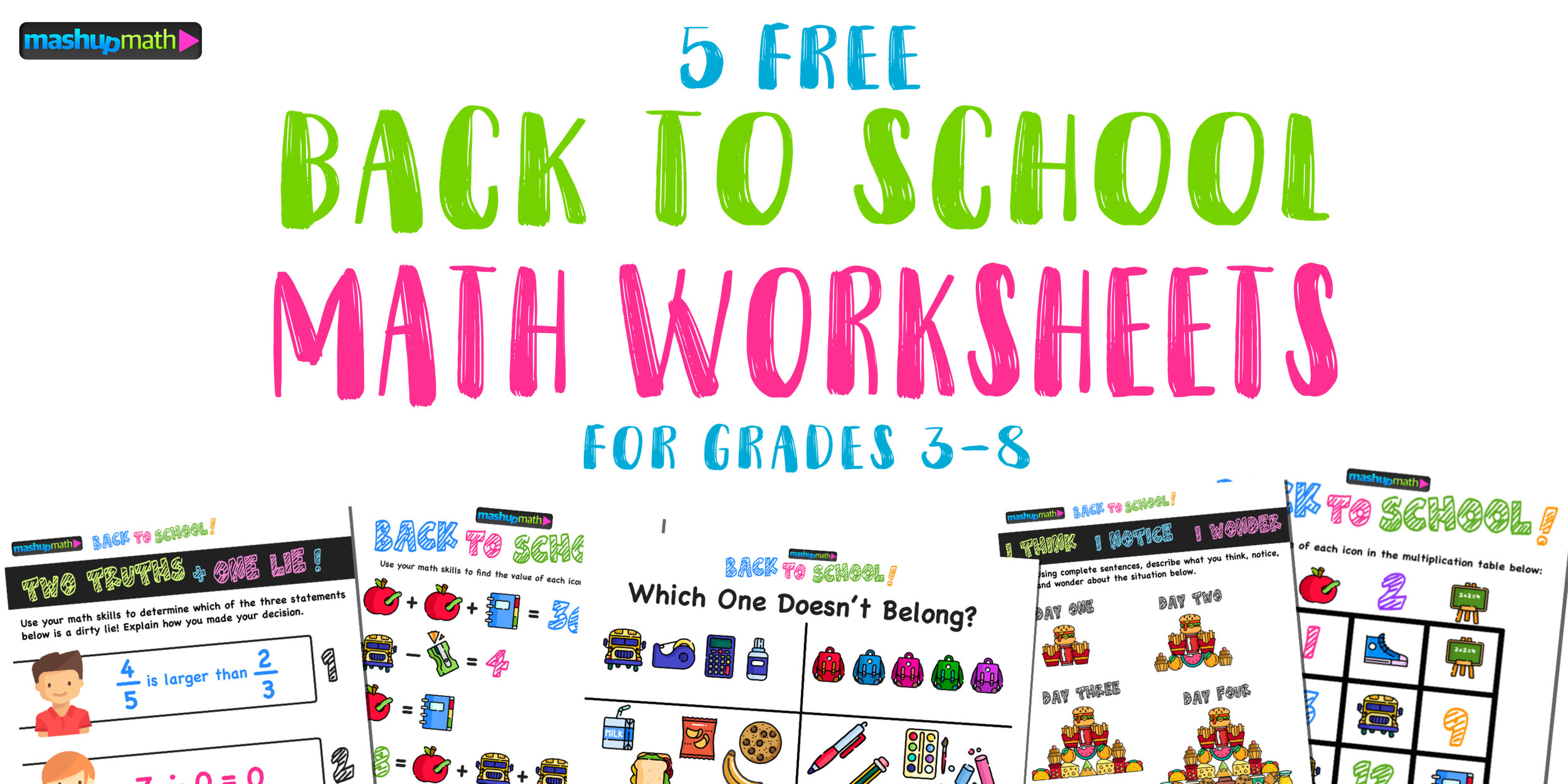Are you looking for some fun, engaging, and free back to school math activities to share with your kids?
The first days of school are an exciting time for students, and sharing activities that channel your kids' enthusiasm into fun learning experiences is a great way to start the year off on the right foot.
That’s why I’ll be sharing fun Back to School Math Puzzles with my kids during each day of the first week of school this year. Math puzzles and challenge problems give your kids an opportunity to think critically and deeply about mathematics, develop problem-solving strategies, and work through challenging problems.
And when math activities incorporate your kids' personal interests, their engagement will skyrocket!
So, go ahead and try these challenges and puzzles with your kids this back to school season. These free back to school math worksheets are perfect for warm-up and/or cool-down activities and are great for sparking mathematical discussions in your home or classroom.
The puzzles are perfect for students in grades 3 through 8.
How to Download: You can download any of the puzzles by right-clicking on the image and saving it to your computer or by dragging-and-dropping it to your desktop.
Would you like more FREE math resources in your inbox every day? Click here to sign up for my free math education email newsletter (and get a free math eBook too!)
1.) Order of Operations Puzzle
Use your math skills to find the value of each icon and the '?'
Apple = 12
Notebook = 12
School Bus = 8
Pencil Sharpener = 4
? = 36
Hint: Since the apple and the notebook are equal to each other, they are interchangeable.
2.) Multiplication Table
Multiplication tables work like a Bingo board, where the value of each box represents the product of its corresponding row and column.
Apple = 1
Chalk Board = 3
Sneaker = 2
School Bus = 6
Notebook = 18
Looking for more free math challenges like this one to share with your kids? click here
Are you looking for more daily math challenges and puzzles to share with your kids?
My best-selling workbook 101 Math Challenges for Engaging Your Students is now available as a PDF download.
3.) Which One Doesn't Belong? (WODB)
WODB activities are meant to spark mathematical thinking and discussion and do not have a single correct answer. They work well as warm-up and cool-down activities.
Want to learn more about how to use WOBD? math activities with your kids? click here
Tip: Have your kids justify their thinking in writing!
Are you looking for more daily WODB? math graphics?
You can now share 101 daily WODB warm-up activities for grades 1-9 with your kids with our PDF workbook!
4.) Think-Notice-Wonder (Writing Prompt)
Writing about math encourages creativity, exploration, and communicating one's thoughts and feelings, which leads to deep and meaningful understanding of difficult math concepts.
Think/Notice/Wonder is a great strategy for getting your kids engaged in math writing every day.
Want to learn more about how to use TNW math activities with your kids? click here
Want more? Download 101 Daily Think-Notice-Wonder Writing Prompts for Engaging Your Kids
You can now share 101 Daily Think-Notice-Wonder Writing Prompts with your kids with our PDF workbook!
5.) Two Truths and One Lie (2T1L)
2T1L activities help your kids to develop reasoning skills, make logical arguments, express their ideas in words, and engage with visual mathematics—which ultimately leads to deeper and more meaningful understanding of challenging topics and concepts.
Answer: Statement 2 is a lie because any value divided by zero is undefined.
Looking to Share More 2T1L With Your Kids This Year?
You can now share 101 Two Truths and One Lie Math Activities for Grades 3-5 with your kids with our PDF workbook!
What strategies are you using to engage your kids this back to school season? Share your thoughts and suggestions in the comments section below!
(Never miss a Mashup Math blog--click here to get our weekly newsletter!)
By Anthony Persico
Anthony is the content crafter and head educator for YouTube's MashUp Math and an advisor to Amazon Education's 'With Math I Can' Campaign. You can often find me happily developing animated math lessons to share on my YouTube channel . Or spending way too much time at the gym or playing on my phone.












































